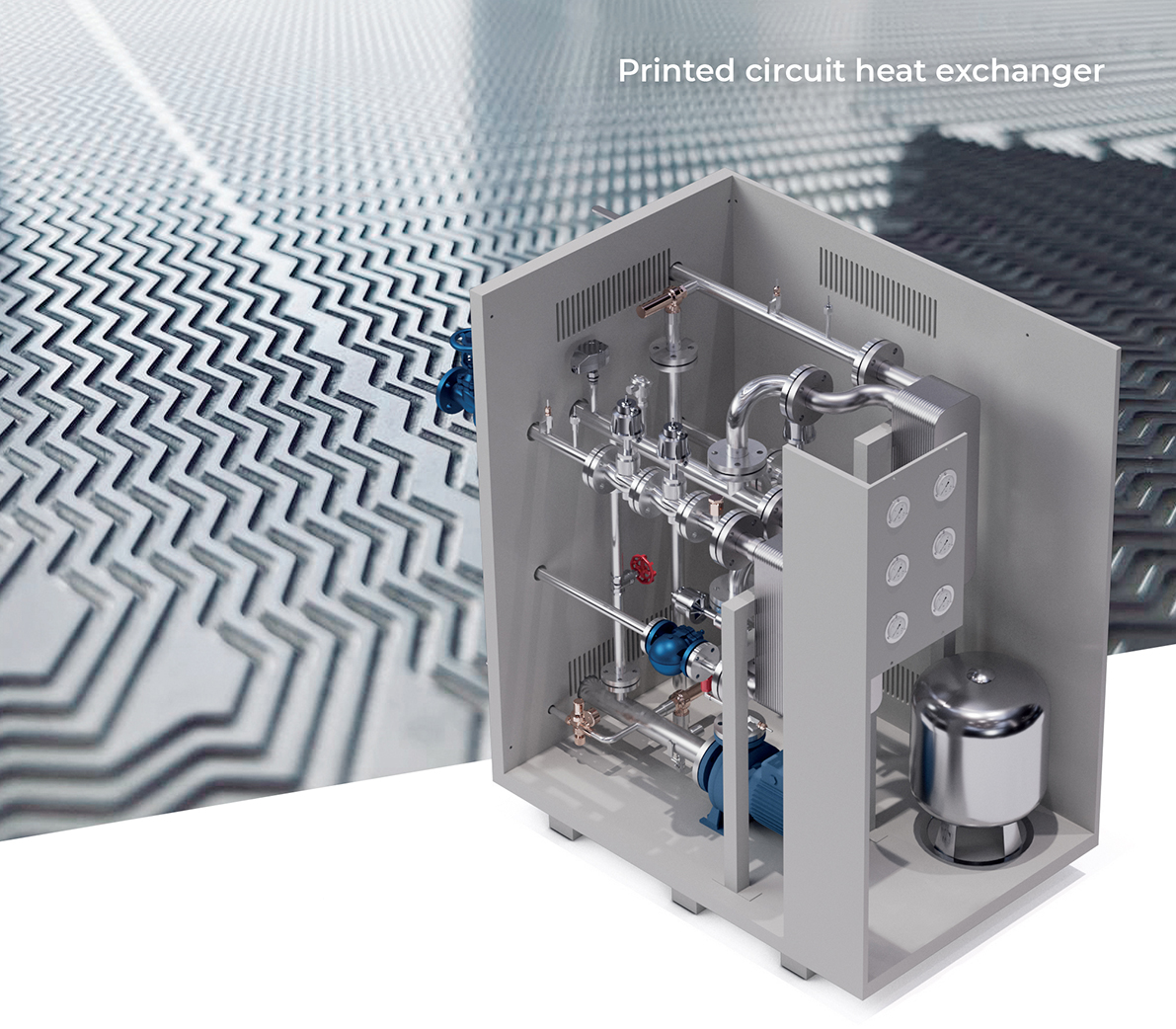We dedicate another article to illustrate the advantages offered by printed circuit PCHE heat exchangers for use in hydrogen refueling stations. As already explained previously, this innovative type of plate heat exchangers, created using a special diffusion bonding process for the thermal transfer pack and employing chemical etching for the layout of microchannels on the plates, is used in hydrogen refueling station to cool the gas in its different compression phases.
The possibility to work with extremely high pressures, up to 700 bar, guaranteeing high energy efficiency thanks to the micro-channel structure of the plates, also giving high desing freedom in order to customize the heat transfer circuits of the exchanger for specific application needs, leads to great reliability and durability of this type of exchanger. Essential characteristics in extremely challenging applications in the hydrogen industry, making it a potentially very interesting market for PCHE heat exchangers.

Therefore, here are some other advantages that PCHE heat exchangers offer in this type of applications:
- Compactness: their compact structure saves space, an important factor in hydrogen refuelling stations where space is limited.
- High thermal efficiency: the microchannel configuration offers a high heat transfer surface area, improving heat transfer efficiency.
- Versatility: PCHE heat exchangers can be used for a variety of fluids and operating conditions, making them highly adaptable to different cooling and heating needs.
In conclusion, PCHE heat exchangers are vital components in hydrogen refueling stations, helping to ensure a safe and efficient operation. Their ability to handle the heat generated during hydrogen compression, combined with their compactness and reliability, makes them a preferred choice for this application. As hydrogen infrastructure expands, the importance of this innovative technology will continue to grow, supporting the development of more sustainable and green mobility.
